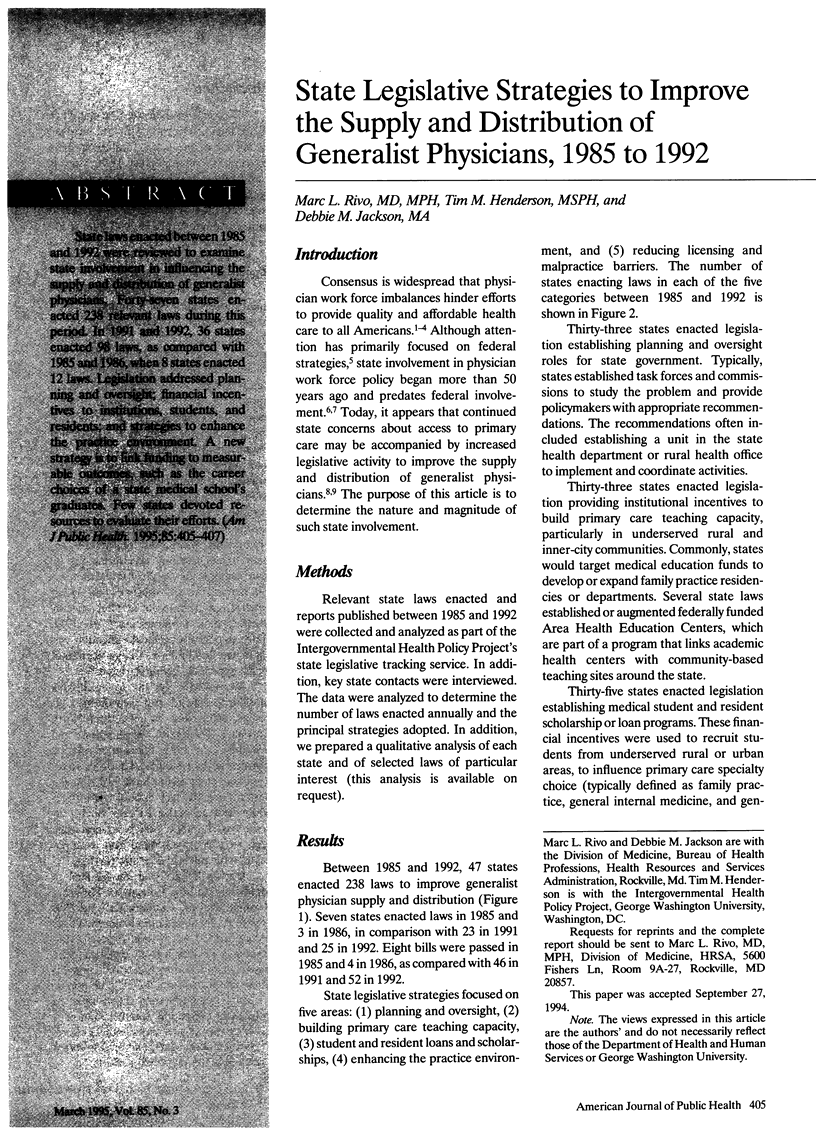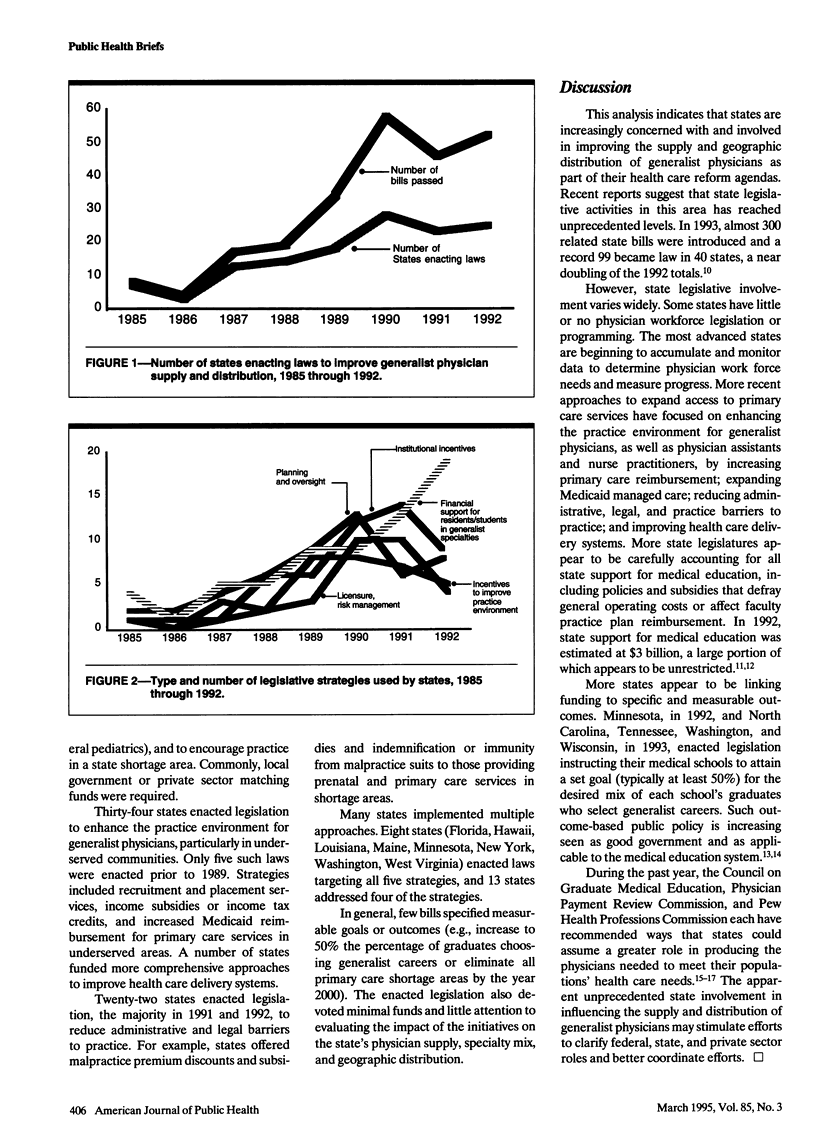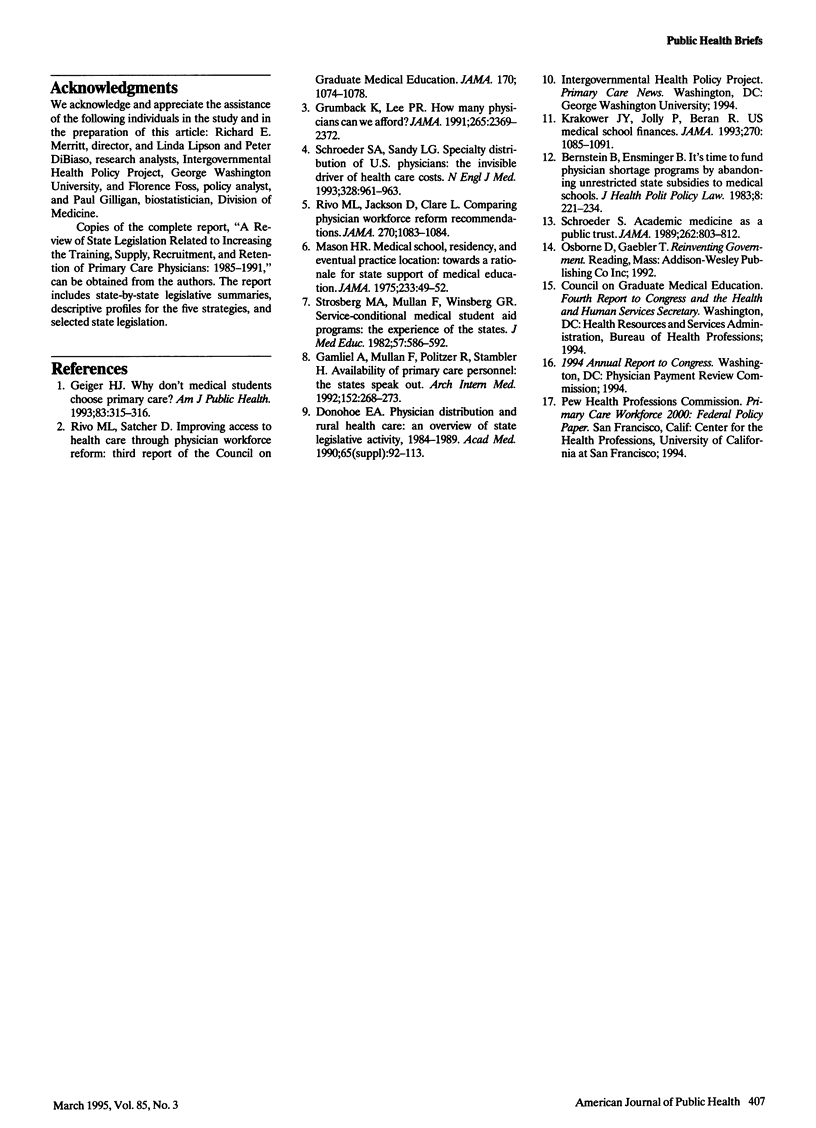Abstract
State laws enacted between 1985 and 1992 were reviewed to examine state involvement in influencing the supply and distribution of generalist physicians. Forty-seven states enacted 238 relevant laws during this period. In 1991 and 1992, 36 states enacted 98 laws, as compared with 1985 and 1986, when 8 states enacted 12 laws. Legislation addressed planning and oversight; financial incentives to institutions, students, and residents; and strategies to enhance the practice environment. A new strategy is to link funding to measureable outcomes, such as the career choices of a state medical school's graduates. Few states devoted resources to evaluate their efforts.
Full text
PDF


Selected References
These references are in PubMed. This may not be the complete list of references from this article.
- Bernstein B., Ensminger B. It's time to fund physician shortage programs by abandoning unrestricted state subsidies to medical schools. J Health Polit Policy Law. 1983 Summer;8(2):221–234. doi: 10.1215/03616878-8-2-221. [DOI] [PubMed] [Google Scholar]
- Gamliel S., Mullan F., Politzer R., Stambler H. Availability of primary care health personnel. The States speak out. Arch Intern Med. 1992 Feb;152(2):268–273. [PubMed] [Google Scholar]
- Geiger H. J. Why don't medical students choose primary care? Am J Public Health. 1993 Mar;83(3):315–316. doi: 10.2105/ajph.83.3.315. [DOI] [PMC free article] [PubMed] [Google Scholar]
- Grumbach K., Lee P. R. How many physicians can we afford? JAMA. 1991 May 8;265(18):2369–2372. [PubMed] [Google Scholar]
- Krakower J. Y., Jolly P., Beran R. US medical school finances. JAMA. 1993 Sep 1;270(9):1085–1091. [PubMed] [Google Scholar]
- Mason H. R. Medical school, residency, and eventual practice location. Toward a rationale for state support of medical education. JAMA. 1975 Jul 7;233(1):49–52. [PubMed] [Google Scholar]
- Schroeder S. A., Sandy L. G. Specialty distribution of U.S. physicians--the invisible driver of health care costs. N Engl J Med. 1993 Apr 1;328(13):961–963. doi: 10.1056/NEJM199304013281312. [DOI] [PubMed] [Google Scholar]
- Schroeder S. A., Zones J. S., Showstack J. A. Academic medicine as a public trust. JAMA. 1989 Aug 11;262(6):803–812. [PubMed] [Google Scholar]
- Strosberg M. A., Mullan F., Winsberg G. R. Service-conditional medical student aid programs: The experience of the states. J Med Educ. 1982 Aug;57(8):586–592. doi: 10.1097/00001888-198208000-00002. [DOI] [PubMed] [Google Scholar]


